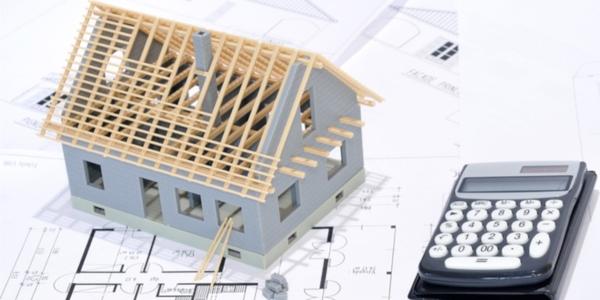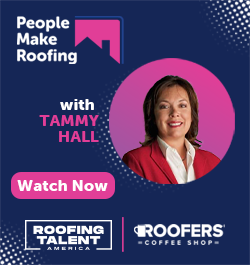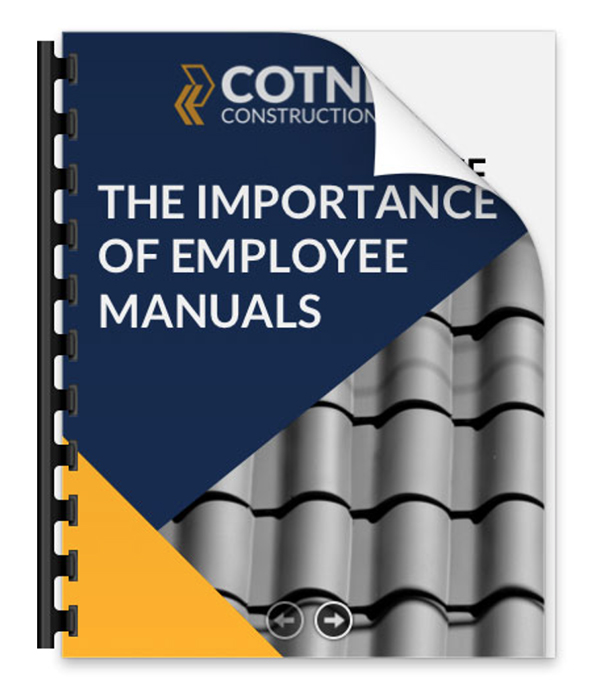Bidding and Estimating so You Can Remain Profitable

By IKO.
How to bid, estimate and price a roofing job.
Investing a little time into learning how to bid roofing jobs and how to estimate roofing jobs can pay dividends for your business. Roofing Contractor has found that 90 percent of roofers underbid their jobs. The whole industry could benefit from brushing up on how to bid a roofing job. You could earn more margin by changing how you measure the roof or how you estimate costs to better reflect the real costs you’ll pay.
You’ll also benefit from learning how to get roofing jobs through better pricing and bidding. Perhaps your bid isn’t complete or isn’t clear to the homeowner? If you can use your bid as an opportunity to express your value, you can stop focusing on being underbid and make more profit overall. We’ll walk you through every step of the estimating and bidding process so that you can keep growing your roofing business.
How to measure the roof and calculate how many shingles you’ll need.
The first step of any estimate is to measure the roof and calculate the largest material cost you have – shingles. Refining your estimating skills can help you find the metaphorical or literal hidden corners that cost you money.
- Step One : While on the ground, measure the exterior of the home. From those measurements, calculate the home’s area in square feet. For example, let’s say you’re working with a simple rectangular home. From your ground measurements, you found it has a width of 32 feet and a length of 64 feet. Its area is therefore 2,048 square feet.
- Step Two : When you divide the area of the home by 100, you find out how many squares (that’s simply a roofer’s term for 100-square foot areas) you are working with. As three shingle bundles are usually meant to cover a square, this calculation is very useful. Our example home has 20.48 squares.
- Step Three : However, what you’ve just calculated is a flat area, and most residential roofs are pitched. You need to account for the pitch in order to have an accurate materials estimate. First, measure the roof’s pitch. Start at the edge of the roof and measure out 12 feet.
- Step Four: Now measure upwards at a 90-degree angle to capture how much the roof rose over that length. Let’s say our roof rose 5 feet. That means its pitch is 5:12.
- Step Five : A roof with this pitch would use roughly 25 percent more shingles than flat roofs. So, to calculate how many squares are in this roof, you’d multiply the squares you’ve already calculated by 1.25, to add the extra quarter. That would give this roof 25.6 squares (20.48 x 1.25 = 25.6).
- Step Six: Round up to 26. Remember, you always want to plan for waste and surprises so that your costs do not exceed what you bid and so that you don’t have to buy more shingles while you’re on the job.
- Step Seven: Once you have your final square amount, you need to account for waste. Approximately 10 to 15 percent of your shingles will be wasted.
You might be wondering, what if your roof has a different pitch? Well, if this roof’s pitch were closer to 3:12 than 5:12, you would multiply the number of flat squares by 1.15. If the pitch were 4:12, you’d split the difference between 1.25 and 1.15, so that you would multiply by 1.20.
What about steeper roofs? For roofs with a pitch between 6:12 and 9:12, multiply by a number between 1.24 to 1.4. For high-pitched roofs with a slope between 10:12 and 12:12, multiply by a number between 1.4 to 1.7.
Factoring roof pitch into your calculation.
If you’re working on a roof that has multiple slopes or is composed of multiple shapes, you’ll need to calculate the area and squares of each portion separately and add them together to get your final amount. The easiest way to measure each section separately is from the roof, so you don’t need to walk through your client’s home.Consider that if this same roof had a 12:12 pitch, it would need 34.8 squares (20.48 x 1.7 = 34.8), which you would round up to 35. That’s a huge increase from the low slope square amount of 26. If you miscalculated the area or forgot to account for slope, you could be estimating considerably under your actual costs. You may also run out of shingles while you’re on the job – costing you time.
You will find that some shingle manufacturers place fewer shingles in their bundles. You’ll need more bundles if you’re using a brand that cuts it closer to 100 square feet than others. Further, some specialty shingles may cover less than 100 square feet per three bundles, so be sure to double-check.
Inspecting the roof.
Even if a homeowner is directing you to a specific area of the roof where they believe there is a leak, you should thoroughly inspect the whole roof. There may be more damage the homeowner does not know about, and you could save him/her money by catching it before it causes damage. Plus, this will help you sell a larger job and earn the homeowner’s trust.
When inspecting the roof, write down the following:
- Any areas of damage.
- The condition of the shingles.
- The number, condition and length of eaves.
- The number, condition and length of valleys.
- The length and condition of hips and ridges.
- The number and condition of vents, chimneys, plumbing vents and skylights.
- The length and condition of all flashing.
- Any unusual roof features, like solar panels and satellite dishes.
- The number of layers of shingles and other materials already on the roof.
Before you climb down from the roof and return to speak to the homeowner, make a general plan of what the roof needs, so you can answer some of his/her questions up front. Leave the details to the bid.
Calculate materials, labor and overhead.
Now you need to find the costs of your other materials as well as labor and overhead. When you first learned how to bid a roofing job, it’s likely that you neglected several key costs, including a portion of rental costs or insurance costs. This list will help you find those missing costs.
First, before you start calculating your materials and labor, refamiliarize yourself with any relevant building codes, because they can significantly impact your calculations. For example, some municipalities require you to use more than four nails to secure shingles. Others require an ice and water protector. It all depends on the location of the home.
Once you’re ready, calculate each material you’ll need:
- Nails: If you’re using IKO’s Cambridge™ shingles, you’ll use approximately 240 nails per square, or 360 nails per square when installing by the High Wind Application Procedure. Our shingles are metric shingles, which have a larger exposureand therefore need fewer nails than most others, which is a great way to cut costs. If you’re using another shingle with a smaller exposure, and consequently less coverage, you’ll likely need to use more nails. You can keep track of how many nail boxes you use on each unique job, which will help you come up with more exact estimates for your future bids.
- Flashing: Use your earlier measurement of the length of the roof’s flashing to determine how much you will need. Don’t forget about valley flashing or that step flashing pieces need to overlap by at least 2 inches. Plus, you’ll need specialty boots for plumbing vents.
- Underlayment: Underlayment manufacturers will tell you the area that each roll of underlayment contains, which makes calculating your underlayment needs easy so long as you account for how much overlap you typically achieve when installing. Don’t forget to account for ice and water protection around the eaves, valleys and other roof features.
- Hip and ridge cap shingles: Your original shingle calculation did not include the hip and ridge cap shingles. You already measured the length of hips and ridges, and a 3-tab bundle of shingles will cover 35 linear feet (9.2 meters), if you cut each shingle into three pieces. If you’re using specialty hip and ridge cap shingles, the manufacturer should tell you how much linear feet a bundle will cover. For example, one of IKO’s Hip and Ridge 12™ shingle bundles will cover 36.5 linear feet (11.1 meters).
- Vents: For some jobs, you can keep the vents as is, or reuse them, but not always.
- Equipment: You can’t forget the rental and transportation costs for all of the equipment you need for the job, which might include a dumpster, boom truck, delivery costs, etc.
- Labor: First, decide how many employees this job will require. Then, if you pay your employees by the hour, calculate labor costs by the hour. Remember that a few things can increase the time needed for a project, like a complicated roof shape, more valleys and flashing than usual, removal of multiple layers of shingles, etc. Weather conditions may also factor into your labor costs. If you need to dismiss employees due to inclement weather, do you need to pay them, and how much? Plus, you will need to pay for their time as they prepare the roof for the rain, which may involve tarping it.
- Payment: If you pay your employees by the square, calculate it that way. Don’t forget to include a percentage of the cost of employees who aren’t on the roof, like salespeople and accountants.
- Overhead: There are a few more odds and ends to add. These could include vehicle maintenance, fuel costs, a percentage of the rent and utilities for your office space, worker’s compensation insurance, etc.
How to price a roofing job.
Now that you know approximately how much the job will cost you, you have to decide what to charge your customer. According to Roofing Contractor, more than nine out of 10 roofing professionals won’t achieve their goal revenue because they simply do the math wrong. If you want to make a 10 percent margin on a $1,000 job, you charge $1,111, not $1,100. How do you get to that number?
The total cost to you for this job is $1,000. If you want a 10 percent margin, those costs represent 90 percent of the final selling price, while the margin is the other 10. So, the final selling price is equal to the costs to you divided by the percentage: 1,000 / 0.90 = 1,111. Therefore, you charge the customer $1,111.
Let’s say you wanted to calculate a 5 percent margin on this same job instead. If so, your costs would be 95 percent of the total selling cost, while the margin is the other five. Again, you write out the percentage as a decimal place and use the same formula. 1,000 / 0.95 = 1,052. So, to achieve a 5 percent margin, you’d charge the customer $1,052.
Good, better, best bid for roofing.
Knowing how to achieve a particular margin is important, but it doesn’t help you decide which margin will work best for your business. Instead of picking a single margin, offer your clients three (with increased value at each price point), and see what they choose. This strategy is called good, better, best pricing.
There are a few different ways to accomplish this pricing scheme. You can offer homeowners different shingle and underlayment combinations, making three discreet packages. For example, a customer who wants a premium shingle, like IKO’s Crowne Slate™, will pay the best prices. On the other hand, an elderly couple who have traditional tastes and are on a tight budget might prefer a good package with IKO’s 3-tab shingles. So, you might present your bid with three packages that look like this:
- Good Package: 3-tab shingles. Cost: $1,052.
- Better Package: Architectural shingles, and superior cleanup services. Cost: $1,311.
- Best Package: Premium Designer shingles, higher-end vents and accessories, superior cleanup services and second roof inspection. Cost: $1,876.
You’re not only adding on the price of the higher cost shingles, but you’re also adding a higher margin for each package. Perhaps you can see the rationale already: Though these numbers are made up just to serve as an example, you can see that it’s a much lower jump to the better package than to the best. You can see the value of the higher-end packages and so can your client.
To justify a higher margin, you can also offer good, better, best pricing packages based on your services. For example, your best pricing package might offer a second roof inspection a certain amount of time after you’ve finished the job. That gives clients more value and enables you to charge more for only a modest amount of your time. On the other hand, if your goal is to prevent callbacks, that might not be the strategy for you. But, there are other services you could offer. You could even feature a service you already provide in this pricing scheme.
Offering a good, better, best pricing scheme allows you to serve a wider range of customers, growing your business. You will still capture high-end clients who are drawn to the best package. Of course, when you’re considering how to price a roofing job, you’re also thinking about being undercut. However, this pricing scheme actually reduces the likelihood that budget-minded clients will choose another roofing company that offers a lower price because you are still offering a very competitive price.
You can offer more than three pricing packages, but the more you offer, the more likely it is that the homeowner will get overwhelmed by their options and simply go with a company offering a less-confusing pricing structure. Your price needs to be clear, like the rest of your bid.
How to write an estimate for a roof job.
Once you have a pricing structure, you’re ready to write a formal bid. You need to keep three key things in mind to write a successful bid:
- First: It has to clearly communicate to the homeowner exactly what products and services they are getting.
- Second: It should be easy to understand, free of too many specifics or industry jargon.
- Third: It has to be detailed enough that the homeowner understands the value he/she is getting.
It can be a challenge to balance these needs. Some clients will be more knowledgeable about roofing than others and will understand or want more details. Others will be less inclined to get the details. However, what you never want is for a homeowner, who has multiple bids, to see an important detail on someone else’s bid that you didn’t include on yours. Make sure that you cover all of the basics.
Homeowners expect to see the following on a job estimate:
- Proof of license and insurance: You should include any documents that can reassure customers that you run a responsible business.
- Lien release: Homeowners don’t want to worry about whether you will pay your subcontractors. Put their mind at ease with a legally binding lien release.
- Termination clause: There are good reasons for you, or the homeowner, to want to end the contract. Spell out those terms so that you’ll both be comfortable.
- Start and end dates for the project: You will want to mention that these dates are flexible in the case of inclement weather or an unexpected issue with the roof.
- Terms of payment: Include the deadline for any down payments, progress payments and final payments and their amounts. Explain what payment methods you accept and what your terms are for late payment. Do not be afraid to charge interest on late payments.
- Cost of labor and materials: Do not reveal your markup in this section. Itemize materials, but list labor as a lump sum. Be sure to include any minor sheathing repairs in this section as well. Also, mention whether excess materials are your property or the homeowner’s. Generally, the leftovers are the contractor’s property to use on another job.
- Names of materials: Homeowners need to know which shingles, underlayment and accessories they are receiving.
- Cost of equipment and cleanup: Separating these items from general labor costs helps reassure homeowners that you will have proper equipment and will clean up after you’re done the job.
- Sales tax and other fees: If you live in an area that charges sales taxes or other fees on roofing, include them so that the customer knows the full cost.
- Your contact information: You likely gave your potential client your contact information before, but there’s always a chance they lost it. Including it on the bid ensures they will have your information readily available to contact you.
Homeowners will have multiple bids in their pocket. You want yours to stand out. Therefore, there are a few marketing items you can include to help seal the deal. They include:
- Testimonials: A few words about your service from a former customer are very convincing to new clients. You can get these testimonials from online sources, like HomeAdvisor, Yelp or Google, or ask good customers to write you one.
- Warranty information: When you remind clients that the big investment they are about to make should last them for years, they are more likely to make that investment. Include the details of any limited warranty you offer and any limited warranty the manufacturer offers.
- Pictures: Don’t underestimate the impact of images, whether you choose to highlight your best work or feature your smiling face. Pictures help make connections.
Of course, there are many more tactics from the marketing world that could apply to your bid. See IKO’s advice about marketing to women , and more general sales presentation advice for roofers.
Roofing proposal forms.
The last thing you need to do is decide on a format for your bid. Larger companies may want to develop a form with the help of a graphic designer, which can help their bid stand out. Those who are just starting can rely on free roofing bid forms available online. Here’s where to find them:
- Microsoft: This template is not made specifically for roofing, but it looks quite nice.
- Template.net: There are a few clean templates here, but the free versions aren’t quite detailed enough.
- Pinterest: If you’re able to do some basic image editing, you can use many of the templates on Pinterest.
- Quote Template: This site offers a basic template that is easy to edit. It’s a good starting point.
- Invoicing Template: This template actually has an image, which you can swap out with another image if you have something in mind.
- The Roofers Club: A user at the Roofers Club offered up a basic template for anyone to use.
When choosing a template, remember that it needs to be clear to homeowners. Look for a template that has clean lines and doesn’t feel overwhelming. Plus, you can highlight the most important parts, such as the deposit information and final price. Don’t forget to run your bid form and your roofing contract by a lawyer before you begin to use them.
Now that you’re equipped to hand out more accurate and persuasive bids, the only thing left to do is follow up on some leads and refine your strategy over time. IKO offers more information for roofing professionals, including how to generate more leads, handle negative reviews or start your own roofing business.
Source: IKO























Comments
Leave a Reply
Have an account? Login to leave a comment!
Sign In